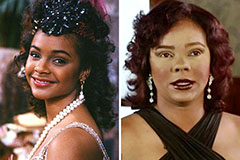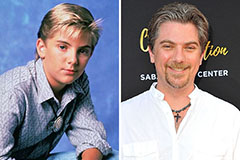With regard to the annals of specialist fumbling background, couple of championship belts evoke the very same sense of status, splendour, and legendary standing as the WWF Winged Eagle Championship Title Belt. Presented during a pivotal era for the Globe Fumbling Federation (WWF), this specific style not just stood for the pinnacle of battling accomplishment yet additionally became totally linked with some of the most significant names and a lot of remarkable moments in the sporting activity's history. The WWF Winged Eagle Belt transcended its function as a plain prize; it came to be a sign of quality, a tangible depiction of a champ's hard work, devotion, and utmost triumph within the made even circle. Its aesthetic appeal, combined with the legendary numbers who proudly wore it around their waists, solidified its area as one of one of the most precious and instantly recognizable champion designs in the whole market.
The late 1980s marked a duration of explosive growth and mainstream appeal for the WWF, mainly fueled by the charisma of Hunk Hogan and the growing "Rock 'n' Wrestling" period. As the firm's exposure and fanbase expanded, there was a requirement for a champion belt that not only looked prestigious however likewise aesthetically symbolized this brand-new period of epic individualities and fascinating storylines. The existing WWF Champion belt, while legendary in its very own right, awaited an upgrade that would reverberate with the advancing aesthetic of the promo.
The WWF Winged Eagle Belt made its debut in early 1988. While the precise day of its introduction is often questioned amongst battling chroniclers, it is extensively approved that Hunk Hogan was the initial to use this brand-new style after preserving his WWF Champion. The belt was a significant separation from its precursor, flaunting a much more detailed and aesthetically striking appearance. The focal point of the layout was a big, intricately detailed gold plate including a majestic eagle with its wings fully outstretched, gripping a banner that proudly showed the WWF logo design. This central image showed power, freedom, and dominance, perfectly aligning with the epic identities that dominated the WWF landscape at the time.
Flanking the main eagle were smaller, luxuriant side plates. These side plates were not at first customizable with the champ's name, a feature that would come to be much more usual in later champion designs. Rather, they commonly included world styles or additional decorations that contributed to the overall regal look of the belt. The natural leather strap of the WWF Winged Eagle Belt was usually black, giving a plain contrast to the dazzling gold of the plates and more highlighting their elaborate describing.
The visual effect of the WWF Winged Eagle Belt was undeniable. Its size and intricate layout made it instantly identifiable and a desirable reward for any kind of wrestler desiring reach the top of the WWF. It appeared like a championship, carrying an air of significance and symbolizing that its holder was really the best in the world. This aesthetic allure played a crucial function in boosting the condition of the WWF Champion and making it a icon that fans could easily understand and desire see their favorite wrestlers hold.
Past its aesthetic allure, the WWF Winged Eagle Belt became associated with an age of epic champions and unforgettable stories. Complying with Hulk Hogan's preliminary reign with the title, a that's who of wrestling symbols happily brought this variation of the champion. "Macho Man" Randy Savage, with his flamboyant style and extreme in-ring personality, added one more layer of stature to the WWF Winged Eagle Belt throughout his unforgettable powers. The Ultimate Warrior, with his impressive power and enthusiastic link with the target market, additionally held the title, more sealing its value throughout the height of his appeal.
The early to mid-1990s saw the WWF Winged Eagle Belt stay the supreme reward, worn by technological wrestling masters like Bret " Hit Man" Hart, whose regimes were identified by intense in-ring competitors and a solid connection with the dedicated WWF fanbase. Shawn Michaels, "The Heartbreak Youngster," additionally held the title throughout this duration, showcasing his extraordinary athleticism and charisma while carrying the renowned belt. Each of these champions brought their one-of-a-kind design and character to the leading edge, additional improving the legacy and eminence connected with the WWF Winged Eagle Belt.
Even as the WWF transitioned right into the edgier and more rebellious " Perspective Age" in the late 1990s, the WWF Winged Eagle Belt remained the top reward. " Rock Cold" Steve Austin, the anti-establishment icon who specified the age, famously held this version of the championship before it was ultimately changed with the " Large Eagle" design in late 1998. Austin's fiery perspective and defiant character, integrated with the visual representation of the WWF Winged Eagle Belt, produced a powerful image that reverberated deeply with the transforming preferences of the wrestling target market. He was the last permanent WWF Champion to use this design, noting the end of an age for this particular version of the title.
The legacy of the WWF Winged Eagle Belt expands much past the wrestlers who held it. It represents a golden era for the WWF, a duration of significant growth and cultural effect. The belt itself has ended up being a valued artefact for battling fans, usually showing up in historical retrospectives, documentaries, and merchandise. Its iconic design remains to evoke fond memories and adoration among those who saw the period it specified.
To conclude, the WWF Winged Eagle Fumbling Championship Title Belt holds a special location in the hearts of battling followers worldwide. Its magnificent style, featuring the powerful winged eagle, completely caught the spirit of a transformative era for the WWF. Much more notably, it was the icon of success for a generation of epic wrestlers who captivated target markets and left an enduring mark on the market. The WWF Winged Eagle Belt is greater than just a champion; it is a ageless symbol, standing for the wwf winged eagle belt pinnacle of success and a valued piece of expert fumbling background. Its picture remains immediately well-known and continues to be celebrated as one of the greatest championship layouts of perpetuity.
 Hallie Eisenberg Then & Now!
Hallie Eisenberg Then & Now! Lark Voorhies Then & Now!
Lark Voorhies Then & Now! Alisan Porter Then & Now!
Alisan Porter Then & Now! Jeremy Miller Then & Now!
Jeremy Miller Then & Now! Danielle Fishel Then & Now!
Danielle Fishel Then & Now!